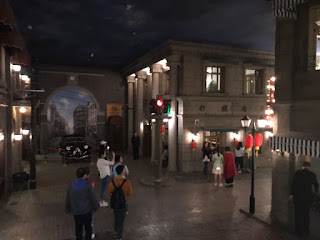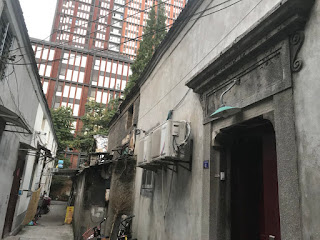Yes, that's right, the Porcelain Tower of Nanjing, part of the Great Bao'en Temple, makes the alternate list of wonders, along with sites such as the Hagia Sophia, Leaning Tower of Pisa, and the Great Wall, at least according to the Wikipedia article 'Wonders of the World':
The Porcelain tower dates back to the early 15th century during the reign of the Ming Dynasty, but the site had been used as a temple for over one thousand years since the era of the six dynasties, and what became known as the Great Bao'en Temple was a highly notable site in the history and spread of Buddhism.
 |
| An Arch from the Original Ming Pagoda, today in the Nanjing Museum. |
Unfortunately though, in the 1850s, Nanjing became the epicenter of what is to date the world's deadliest civil war - the Taiping Rebellion, which killed between 20 and 100 million Chinese - possibly making it the deadliest conflict in human history.
Being the center of it all, the lower Yangtze saw the most destruction when it came to historical sites, and the pagoda was no different. Not only was much destroyed in the fighting, but the Taiping rebels, believing that their leader was a brother to Jesus Christ, destroyed what they saw as pagan idols.
The tower may have also been destroyed to stop the Imperial army from capturing it and using it as an observation tower over the rebel capital of Nanjing. And so the tower and complex were destroyed, and that could have been the end of the story.
But it wasn't.
Reconstructing a Wonder
It's the year 2010, and the Nanjing Municipal Government has decided to rebuild the wonder that once brought so much pride to locals and awe to foreign visitors. And with it, came the largest single donation in Chinese History, a Billion Yuan, by Chinese Dollar Billionaire and Philanthropist Wang Jianlin.
And in 2015, the modern version of the great Bao'en Temple and Pagoda opened to the public. But when talking about it with my colleagues, I was surprised at how few had even heard of it.
Either way, in July 2018, I thought I'd pay a visit:
The reconstruction has thus been built in a layout much like the original versions - the pagoda being in the courtyard with a surrounding 'cloister' like structure, this time rebuilt in orange . This was where replicas and artifacts of the original temple were exhibited, and it's history explained.
As you can see, the building combines both traditional Chinese architecture with its ultra-modernness:
So too, on the inside was there a combination of ultra-modernity with the old - the latter appearing in the form of original artifacts along with replicas, as well as paintings and models of the site as it appeared in the Ming era:
But what about the Tower itself?
Traveling up to the top was certainly well worth the view - the pagoda being just south of the City Wall and the Zhonguamen, with the 'old town' and Fuzimiao located just to the north. Beyond on the left is Xinjeikou, Nanjing's Central Business District.
Although the structure was largely glass, the interior walls had their Buddhas:
So why rebuild and old wonder in such a modern style?
As soon as I saw the Pagoda complex when passing by on metro one day, the obvious question came to mind. Why rebuild such a historic sight in such a hybrid traditional + modern style, when in the west, we would always try to be as authentic as possible?
Given that each previous reconstruction of the temple had been built to conform or to surpass then contemporary standards, why not also build the 21st Century reconstruction to our latest designs?
And it also shows how the designers see China's modernity and progress in the twenty-first century. Far from seeing it as an abandonment of Chinese civilization, they see it as a renewal of Chinese tradition and past glory - 21st Century modernity is Chinese Civilization par excellence.
And so why not include that modernity in a such a proud historical site?
And let's face it, compared to the dark days of the 19th and 20th Centuries, it is very easy to see the 21st Century as a return to past tradition and glory - no longer is China being overrun by foreign invaders or torn apart by Civil War - and whereas the China of the 20th Century either didn't have the conservationist attitudes, political stability or the funds to rediscover and reinvent her old glories, now in the current glory days she has all three.
And my visit both to the Pagoda itself, and the nearby newly constructed 'old town' both proved exactly that - China's 21st Century is re-appreciating and rebuilding it's old heritage, and is doing so in light of her present day advancements as a country.







































